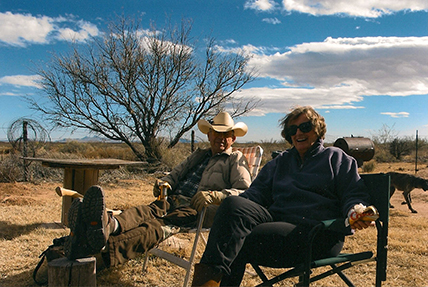Sandhill Farm

Sandhill Farm LLC is located in Cochise County in Southeast Arizona–-some 30 miles north of the Mexican border. It is made up of 1,000 acres of deeded land that has been acquired parcel by parcel beginning in 1987. Sandhill Farm includes 112 acres of seasonal wetland and 12 acres of irrigated farmland.
The name Sandhill Farm is a tribute to the some 30,000 to 40,000 Sandhill cranes that winter in our valley, the Whitewater. On some days, particularly when it’s very windy, 4,000 or 5,000 of these magnificent birds use our property. Their wonderful call gives one a feeling of antiquity.
Some years ago the board of directors of Sandhill Farm made the decision to place a conservation easement on all of our 1,000 acres of deeded land. As stated in the National Conservation Easement Database website, “A conservation easement is a voluntary legal document that permanently limits uses of the land in order to protect its conservation values.” We happily accept these limits because we know we have a valuable piece of seasonal wetlands. Someday we hope to build a viewing platform and a center to be used for events to promote the protection of open land and wildlife.
The property is primarily open rangeland, wetlands, and some seasonal sacaton prairie and agricultural land, and is an important part of the productive agricultural land still remaining in Cochise County. We have two miles of the Whitewater Draw, headwaters of the Mexican Rio Yaqui, which runs through México into the Sea of Cortez. Our property includes natural habitat with a variety of wildlife species, including the Sandhill cranes, migrating waterfowl, ducks, geese, raptors, quail, dove, and several species of owls, including the great horned and barn, as well as mule deer. Sandhill Farm is also the northernmost tier of the Mexican Mallard migration. At times we have seen several hundred mallards nesting on our property. All these different species of wildlife are attracted to Sandhill because of our water, feed, and cover.
The Whitewater Draw is also a habitat for the threatened and endangered southwestern willow flycatcher. Several years ago we received a grant from the US Department of Agriculture to help save this bird by planting 750 Goodding’s willow trees to attract the willow flycatcher for nesting.
The cranes, like sharks in the sea, are our touch with infinity. They have survived for over thousands of years. It gives us hope for the future!





